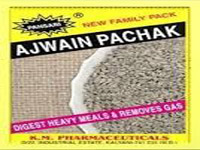Among the deadliest and most harmful creatures or pests in the world are mosquitoes. They carry over 3,000 different species that are known to transmit deadly illnesses such as Dengue, Malaria, Brain Fever, Zika fever, and others. The variety of viruses that mosquitoes carry and then transmit to people and other animals is what makes them so dangerous.
For you and your family, having a mosquito infestation at home may be quite harmful. If you are worried of how many mosquitoes are there in India, you have to start taking action right now to get rid of mosquitoes from your home. Get a mosquito control service in Kolkata that will ensure that there are no pests in your house or the surroundings. They guarantee a healthy and pest-free environment no matter where you live.
Let’s understand the number of mosquitoes in India
Estimating the precise number of mosquitoes in India is a daunting task, considering the country’s vast landmass and varied climatic conditions. However, scientists and researchers have employed some methods to provide a rough estimate.
One common approach involves calculating the mosquito population density per square kilometre. India’s diverse geography, ranging from tropical rainforests to arid deserts, influences mosquito distribution and abundance. In regions with favourable breeding grounds, such as stagnant water bodies and warm temperatures, mosquito populations thrive. In contrast, high-altitude areas and urban centres may have lower mosquito densities.
Understanding Mosquito Numbers: A Deep Dive into India’s Mosquito Population
Research suggests that mosquito population densities can vary widely, ranging from around 100 to 1000 mosquitoes per square meter in different regions and seasons. For instance, areas with heavy rainfall and high humidity, such as parts of the northeastern states and coastal regions, often harbour larger mosquito populations due to abundant breeding sites.
Another factor influencing mosquito abundance is human population density. Urban areas with densely populated communities provide ample blood meal sources for mosquitoes, contributing to higher mosquito numbers. Moreover, inadequate waste management and water storage practices in urban settings create breeding grounds for mosquitoes, exacerbating the problem.
To Get Mosquito-Free Living: Transform Your Space with Proven Control Services:
Mosquito control services encompass a range of strategies and techniques aimed at reducing mosquito populations and minimizing their impact on human health. These services are typically provided by professional exterminators or pest management companies. They are equipped with the knowledge, expertise, and specialised tools necessary for effective mosquito control.
Mosquito control services play a crucial role in controlling the spread of mosquitoes. Here are some ways in which mosquito control services help in this effort:
Identification and Monitoring: Mosquito control services often start by identifying and monitoring mosquito populations in an area. This involves trapping and counting mosquitoes to determine their species and population density. This information helps in developing targeted control strategies.
Habitat Reduction: Mosquito control services work to eliminate or reduce mosquito breeding habitats. Mosquitoes typically breed in standing water, so efforts are made to remove sources of standing water. Examples include stagnant ponds, clogged gutters, old tyres, and other water-holding containers.
Larviciding: Mosquito control services may use larvicides to kill mosquito larvae in their breeding habitats. These larvicides can be biological (e.g., bacteria or toxins that target mosquito larvae specifically) or chemical (e.g., insect growth regulators or pesticides). This helps to reduce the adult mosquito population before they emerge.
Besides employing mosquito control services, you need to prevent mosquito breeding in your home and environment:
Remove Standing Water: Mosquitoes breed in standing water, so eliminating sources of standing water around your home is crucial. Regularly inspect your property for areas where water can accumulate, such as flower pots, bird baths, clogged gutters, old tyres, and containers. Empty or change the water in these containers frequently to prevent mosquito breeding.
Use Mosquito Nets and Screens: Install window and door screens to prevent mosquitoes from entering your home. Use mosquito nets over beds and cribs, especially if you live in an area where mosquito-borne diseases are prevalent. Make sure the nets are intact and properly fitted to provide maximum protection.
Keep Your Home Clean: Mosquitoes are attracted to clutter and debris. So, keeping your home clean and clutter-free can help reduce their hiding places. Regularly clean up yard debris, trim overgrown vegetation, and dispose of trash properly.
Maintain Your Yard: Keep your yard well-maintained to reduce mosquito habitats. Regularly mow the lawn, trim bushes and shrubs, and remove any leaf litter or debris where mosquitoes can hide.
Conclusion
In conclusion, mosquito control services play a vital role in safeguarding public health and enhancing the quality of life by effectively managing mosquito populations. Through a combination of surveillance, habitat reduction, larviciding, public education, and integrated pest management strategies, you can mitigate the risks associated with mosquito-borne disease. This will help create safer environments for communities. By engaging in proactive measures and utilising innovative techniques, mosquito control services in Kolkata contribute significantly to the well-being of individuals, families, and entire regions. They also ensure that the menace of mosquitoes is kept at bay.

















